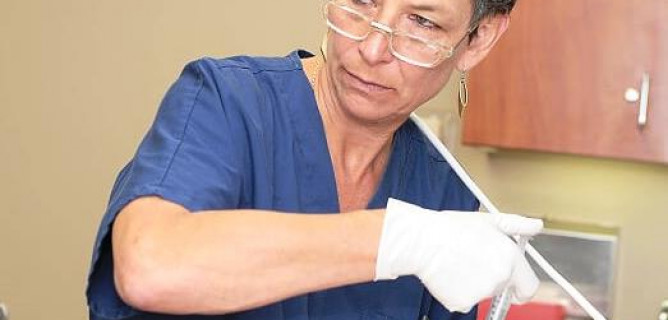By Dr. Annette Zaharoff
Hospitals across the country are reaching bed capacity as the second surge of the COVID-19 starts to peak. El Paso has 60 people being treated COVID-19 at San Antonio hospitals because theirs are full.
Making matters worse, the TSA reported screening more than 1 million people a day in the days leading up to Thanksgiving. That means many people did not heed warnings to stay home to help keep a lid on community spread of the disease. That will likely lead to a feared spike in the surge in a few weeks.
According to four recognized COVID tracking models, the number of new hospitalizations from COVID-19 will rise every day for the next four to 10 weeks. The Center for Disease Control (CDC) says the models estimate 4,600 to 21,000 new COVID-19 hospitalizations per day.
You all know the best medical advice for avoiding getting COVID-19 – wear a mask, practice social distancing, wash your hands frequently and avoid exposure to people outside your household. But that doesn’t mean you won’t get sick or have need to go to the doctor. What happens if you have a surgery scheduled later this month that may soon be cancelled? And with the rising number of COVID-related hospitalizations, would you even want to go?
I can’t speak for all elective surgeries, but for procedures to help address chronic joint pain, like hip or knee replacement surgery, you may have options to consider before going under the knife. And these procedures don’t require an overnight stay in the hospital or even a visit to an ambulatory surgical center.
For more than 15 years at the Non-Surgical Center of Texas, we have offered a menu of regenerative injection therapies that can help patients recover from injuries or chronic pain by stimulating repair of the damaged joint and tissue. Some conditions that may be treated include:
- Knee, hip and shoulder osteoarthritis
- Rotator cuff tears (Shoulder)
- ACL, meniscus, PCL and ligament tears (Knee)
- Plantar fasciitis
- Neck pain
- Low back pain
- Elbow or hand pain
Using ultrasound-guided injection technique that I developed called ProloSound, we can help repair damaged tendons, joints, adjacent joint spaces or ligaments by introducing a safe solution of dextrose (sugar) and local anesthetic that helps promote a “healing cascade” and the growth of normal tissue.
I’ve been using ProloSound since 2005, and teach clinicians from around the world on best practices for ProloSound. Over the years, I have kept up with how to best use ultrasound technology for the various regenerative injection techniques I employ at the Non-Surgical Center of Texas. It is critical to remain at the forefront of providing effective Stem Cell, Prolotherapy and PRP Injection Therapy to offer these services to my patients who could benefit from these treatments.
Ultrasound is an amazing diagnostic tool. It can help detect tendon and muscle tears, such as in the shoulder, which can become a problem area from overuse and due to degenerative issues that commonly occur as we age. Ultrasound also can help assess the health of joint and tendon movement and stability. It also makes it possible for physical medicine and rehabilitation specialists like me to get a clearer view of some bone fractures.
Ultrasound equipment is a very safe, noninvasive imaging technique. It does not emit ionizing radiation like computed tomography (CT) and X-rays. Patients with cardiac pacemakers or metal implants are in no danger from ultrasound scans.
Most importantly for use in Regenerative Injection Treatments, ultrasound provides a very accurate method for administering injections into a joint space or muscle tissue. I can see, in real time, the exact placement of a needle so I can make sure I am addressing the injured area, while ensuring the tip is directed away from neurovascular bundles or other soft tissue.
This means the work I do to deliver Regenerative Injection Treatments to patients can be more effective. And going back to what I said about considering these treatments before elective surgeries, I have had patients who were referred for a hip or knee replacement surgery who sought out our services instead, and avoided having to undergo an operation.
I am passionate about this work, and as a healthcare provider, I’m equally passionate about your safety. We follow strict protocols for sanitizing our clinic several times a day, and require all staff and patients to wear a mask. We will continue to provide our essential services, including physical therapy and non-surgical treatments, to help you get through the pandemic.
Dr. Annette “Dr. Z” Zaharoff heads the Non-Surgical Center of Texas, focusing on non-surgical treatments to relieve pain and repair injuries. A former professional tennis player who competed on the WTA circuit, Dr. Zaharoff has been utilizing regenerative injection treatments including Stem Cell Therapy, PRP Injection Therapy and Prolotherapy for more than a decade. Learn more about her at www.drzmd.com. You can follow her on Facebook at www.Facebook.com/DrZaharoff.

